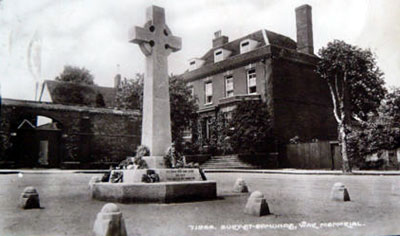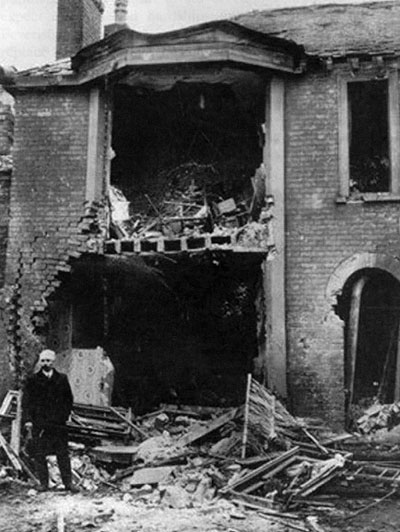
Great Yarmouth was the first town in the UK to be attacked from the air, on January 19th/20th, 1915. Navy Zeppelin L3 dropped 8 high explosive bombs. Two people were killed and several properties destroyed in this attack.
Kings Lynn was bombed on the same night by airship L4, and there were two more deaths. Seven other north Norfolk coastal villages were also hit. A Leipzip newspaper declared, "England no longer an island". |
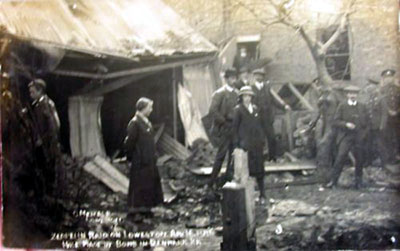
Lowestoft was bombed by Zeppelin L5 on April 13/14th, 1915. |
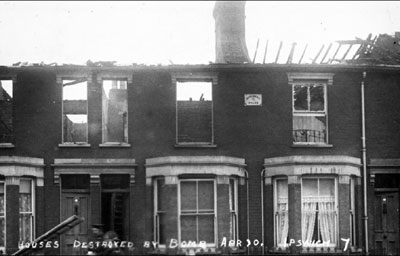
Ipswich was attacked by Zeppelin LZ38 on April 30th 1915 with two explosive and three incendiary bombs. Three houses were burnt out at Rosebery Villas, but residents escaped without injury. Theses addresses are believed to be numbered 56, 58 and 60 Rosebery Villas, Brooks Hall Road, Ipswich.
|
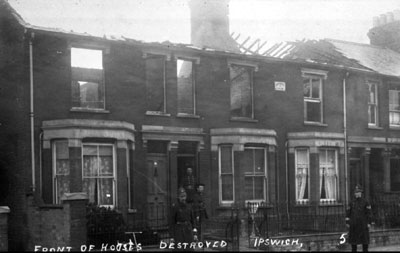
Ipswich attacked on April 30th 1915. This is another view of the same properties at Rosebery Villas in Brooks Hall Road hit by an incendiary bomb. Great Yarmouth had been attacked on the same night, and, after bombing Ipswich Zeppelin LZ38 then proceeded along the A45 to attack Bury St Edmunds. (See page 4a for the damage at Bury)
|
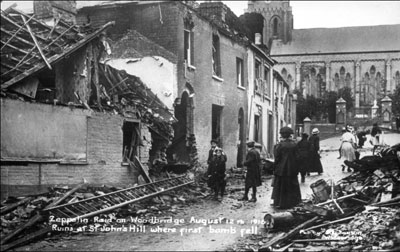
Woodbridge was hit by a Zeppelin attack on 12th August, 1915. Some 28 bombs were dropped by Zeppelin L10, and six people died. The main damage was around St John's Hill. Four airships had set out that night, but only two managed to attack England.
|
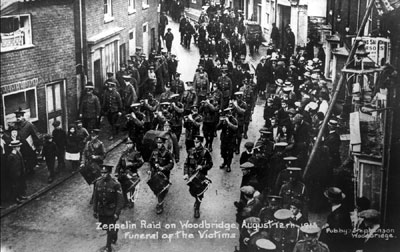
Woodbridge suffered six fatalities in the 1915 Zeppelin raid. This picture shows the funeral procession.
|
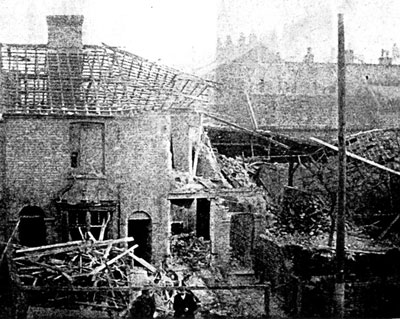
Five people died when a German Navy Zeppelin airship L14 dropped a number of bombs across Sudbury on 31st March 1916. The photograph shows 34 and 35 East Street, which were seriously damaged by a high explosive bomb. Ellen Wheeler, 64, a widow living at No 34, and Thomas and Ellen Ambrose at No 35 were killed in the blast. Silk weaver John Edward Smith aged 50, lived opposite and was caught in the blast as he crossed the road. The fifth casualty was Rifleman Robert Valentine Wilson, aged 42, who was mortally wounded by flying glass at his army billet in Constitution Hill.
An incendiary bomb was dropped in the same raid on Orford House in Melford Road where more soldiers from the 2/6 City of London Rifles were billeted. Sergeant (later CSM) 'Charlie' May went into the burning building to rescue one of his men, Rifleman Bond. For this act of bravery he was awarded the Military Medal, the first to be awarded for gallantry on British soil rather than in overseas combat. (Source- http://www.sudburysuffolk.co.uk/greatwar/zeppelin.asp )
|
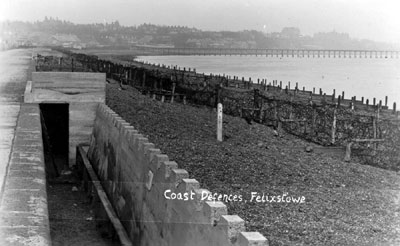
It was now clear that existing coastal defences like these at Felixstowe could not stop a Zeppelin attack. It would later become clear that a naval bombardment could not be prevented, either. Postcard by Emeny of Felixstowe.
|
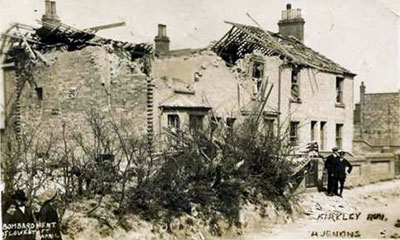
Most of the postcards of destruction at Lowestoft arose, not from Zeppelin attacks, but from bombardment from the sea by the German Fleet, on 25th April, 1916. Great Yarmouth also suffered in this attack. |
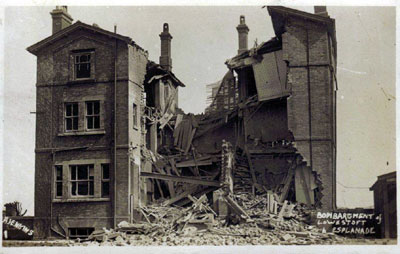
Bombardment of Lowestoft Esplanade.
|
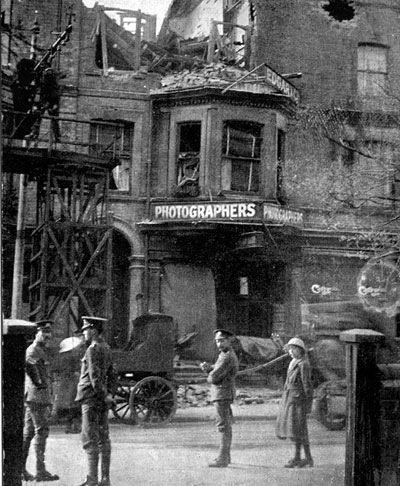
Lowestoft's London Road South after the bombardment on April 25th 1916. |
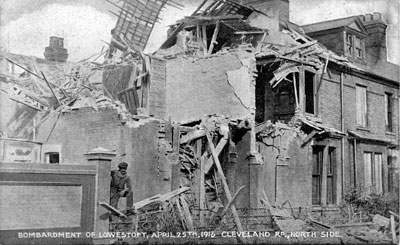
Another view of destruction at Lowestoft from bombardment from the sea by the German Fleet, on 25th April, 1916. Cleveland Road's north side. |
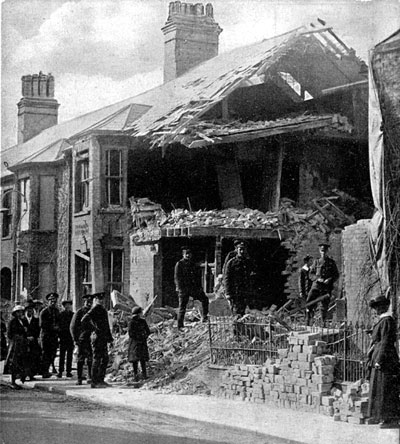
Bombardment of Lowestoft in 1916. This is the damage on Windsor Road.
|
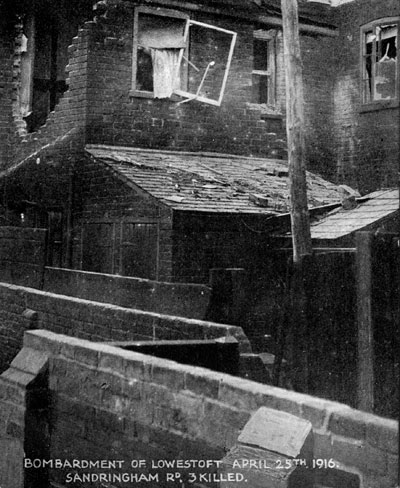
Three deaths occurred at this house in Sandringham Road, Road, Lowestoft, arising from the naval bombardment on April 25th, 1916. No publisher details, but, "British Manufacture Throughout."
|
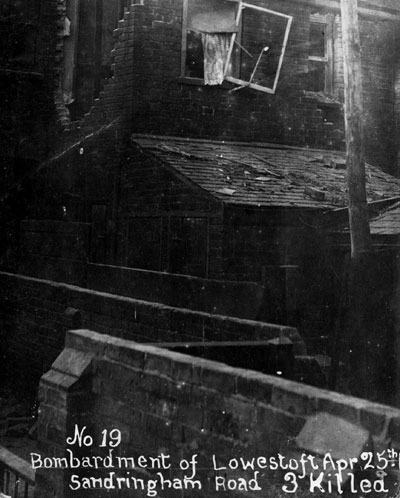
The same view of the house in Sandringham Road, Lowestoft, April 1916, but a different caption.
|
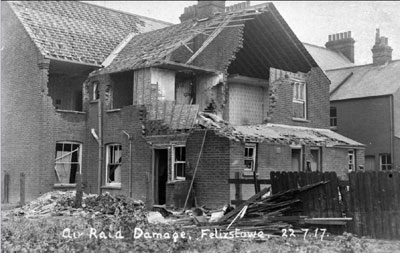
Felixstowe and Harwich were attacked by German bombers on 22nd July, 1917. Twenty one Gotha bombers approached Hollesley Bay at 8am that morning in a 'V' formation. Home Defence launched 122 attack planes to meet them, and coastal defence batteries fired 273 rounds in 12 minutes.
|
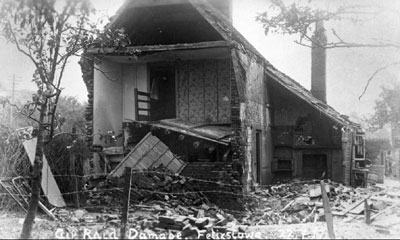
Felixstowe and Harwich was attacked by air on 22nd July, 1917. Fifty five bombs were dropped, but Harwich had no casualties. Felixstowe, however, suffered casualties and extensive damage.
|
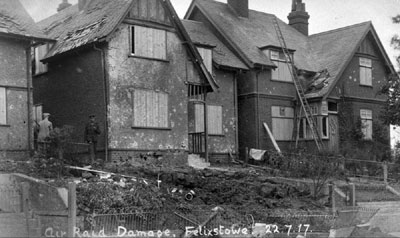
More Felixstowe damage. The RNAS station was a target, suffering one fatality, as was the Suffolk Regiment Barracks, where eleven died. At the Ordnance Hotel the barman was killed.
|


